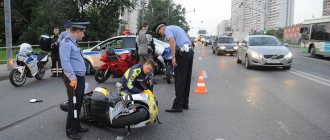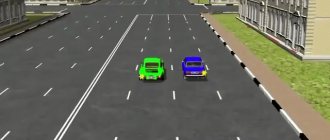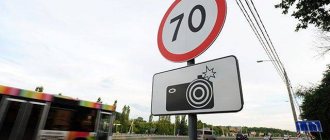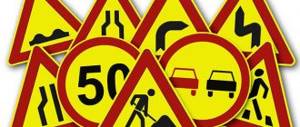Prerequisites for the emergence of private video recording cameras
Back in the early 90s of the last century, the market for video and even audio recording did not exist. However, the direction itself aroused interest among people who subsequently created. Gradually they expanded the range of their work to the following components that can record traffic violations by road users:
- video analytics;
- traffic control system;
- Face Control facial recognition system.
By the way, for the first time I introduced a camera to record traffic violations in Turkmenistan. And only a year later this practice was adopted in Russia.
After this, DPS began to implement the company’s achievements in its work. Thus, to record an offense, it is not necessary to place an employee on every road, and this is impossible. It is enough to install a video recording camera, configure it and receive fines for violations.
True, at the same time another difficulty appeared - there is already not enough money in the federal and local budgets, and if a new item of expenditure is introduced, the deficit may increase even more. That is why, back in 2014, the Federation Council and the State Duma jointly developed a project that would allow private investors to install video recording cameras.
Price issue
That is, a certain company that wins the corresponding tender receives the right to install its own automatic mobile cameras on the roads to record offenses. This practice is developed all over the world, and primarily in France, from which this algorithm was copied.
There, a huge number of automatic recording cameras belong to private companies. But they receive a certain percentage of the amount of fines they imposed. We decided to try the same experience here. For example, in the Moscow region, cameras are exhibited by a certain LLC. According to the agreement, this company receives 230 rubles from each fine issued based on the data from their devices. For comparison, the most common violation is speeding by more than 20 km/h, but up to 40 km/h. For this we impose a fine of 500 rubles. But if it is paid within 20 days from the date of the decision, then the car owner receives a 50% discount. That is, he pays 250 rubles. But even from such a fine, 230 rubles are transferred to the account of the company that installed the cameras. Good extra income. 4.5 thousand detected violations are enough to pay for the camera. Believe me, much more of them are revealed in a week.
How it works?
After the adoption of the bill, private video recording of traffic violations became possible and legal. At the same time, both sides remain in the black: budget funds are not spent, which makes it possible to find other options for financing, and entrepreneurs get the opportunity to earn money.
Previously, according to the same plan, private investors worked with video recording cameras on toll roads. Now it has appeared on public highways as well. The legality of the actions is confirmed by amendments to the law “On Concession Agreements”.
The businessman just has to install the camera and wait to make a profit. In this case, the funds are transferred first to the state treasury (after the violator pays the fine), and only then to the owner of the equipment. The money is not transferred in full. Some funds remain in the budget. The investor's remuneration can reach 233 rubles for each fine.
I do not see you
If you were given a fine from such a camera, this does not mean at all that you have not violated anything, but that they are finding fault with you. You can verify this by requesting filming directly from TsAFAP. After all, merchants only collect data that is transmitted to centers for automated photo-video recording of violations, just like stationary systems.
But there are situations when these complexes are installed in places that are not marked with appropriate signs.
Installation of signs warning about photo/video recording is not required when using a mobile complex. But it happens that such a camera receives a fine for exceeding the speed limit by 27 km/h. The resolution clearly states that the driver was moving at a speed of 67 km/h within the coverage area of the 40 km/h speed limit sign. But here’s the problem: there is no such sign on the road, but there is a camera and a fine. This is grounds for appeal. But, as a rule, the driver prefers to pay the fine rather than contest it.
Pros and cons of doing business
Installing cameras on the roads as a business can really bring in good profits. The amount of income will depend on traffic (how many people pass a video camera per day), the number and severity of violations. The main thing is to choose the right section of the route. Where traffic is already calm, installing a video recording camera is almost pointless. But on highways the profit will be many times greater.
This business sector is attractive to investors due to a number of positive factors:
- the opportunity to earn income without additional effort (it is enough to set up work and find a person responsible for the operation of the cameras and their maintenance);
- income without additional operating costs (you won’t have to invest again and again, since the equipment has a long service life, and if necessary, it can always be repaired or replaced);
- there is no need to collect payments yourself - the amount due from the budget will be transferred by the responsible persons within the established time frame;
- availability of a single deadline for receiving payments;
- the opportunity to benefit the population by preventing crime (although many citizens are skeptical about this).
Of course, such a business has its drawbacks. The most significant features include the following:
- a large amount of profit is made at first, a little later people begin to remember where the camera is located and try not to violate traffic rules in this area (in the worst case, the profit margin can almost disappear);
- a relatively small amount of remuneration (233 rubles compared to the size of current fines - not so much);
- money from the fiscal institution does not arrive in streams, but on scheduled dates, which may cause the lack of necessary funds in a certain period of time;
- the presence of a certain period of cooperation - entrepreneurs can receive commissions only for 12 years after installing the cameras, after this time the contract with the investor ends;
- not all citizens pay fines, sometimes it takes a lot of time to collect them;
- the presence of special rules for installing video recording cameras (in their absence, the fine can be challenged by the violator in court).
Even despite so many disadvantages, we can talk about the high profitability of the business itself. It is not for nothing that currently about 50 government contracts have been concluded for the installation and maintenance of CCTV cameras for a total amount of 1.5 billion rubles throughout the country.
Business at speed
The Avtodoria traffic control information system has become a key and even turning point for the Russian traffic police. Radars that determine the speed of a car and send data to the inspectorate have appeared a long time ago. A little later, stationary and mobile cameras were added to them, which can identify drivers who have violated traffic rules without the presence of traffic police officers on the spot. It has become legally possible to record offenses and fine for speeding using stationary cameras without a traffic police officer since July 1, 2008. These cameras have become widespread in Tatarstan and some other regions. However, both old radars and new cameras hung on poles could not guarantee sufficient operating efficiency: if desired, the driver could install a radar detector (a device that responds to impulses with which the radar records speed) in his car. Such a device warns the driver in advance about a nearby radar, which allows the motorist to slow down and avoid punishment for speeding. However, in some cases, a device originally designed to reduce accidents began to become the cause of emergency situations: a radar detector installed in the cabin signaled the presence of a tracking camera ahead, the driver sharply reduced speed, and a car following him crashed into his suddenly slowed down car...
Uniqueness of the complex
The Avtodoriya complex, developed by Kazan IT specialists, is fundamentally different from conventional radars. In fact, Avtodoriya is a system of several devices. A high-definition camera at the beginning of the site photographs the car and its license plate at a certain point in time. The camera is linked to the coordinates of GPS and GLONASS sensors, which allows you to determine the exact time and location of the first “checkpoint”. At a certain distance there is a second similar device, which also “photographs” the vehicle with reference to coordinates. The distance traveled is divided by the travel time. Using such simple mathematical combinations, Avtodoria produces the result - the average speed at which the car was moving on a given section of the road. Accordingly, if the result obtained is higher than the permitted speed, it means that the car violated the speed limit at least at one point in time. The result obtained is processed by the traffic police, and a fine is sent to the reckless driver. The advantage is that speed measurements by traffic police officers using Avtodoria cannot be tracked by radar detectors: the device does not send signals, it simply photographs the car twice.
Rustem Yunusov , PR manager of Avtodoria, says: “In principle, the system is not so unique - there are similar ones, for example, in Sweden, Italy, and the UK. Developers and investors studied foreign experience and analyzed how much the accident rate and mortality rate have decreased. In areas monitored by average speed measurement systems in the UK, deaths have fallen by 77%. In some cases, radar systems even interfere with safety - drivers brake sharply in front of the cameras and create dangerous situations on the road. Our system forces the driver to comply with the speed limit throughout the entire journey. According to data for 10 months of 2014, in Tatarstan, in the Avtodoriya control zones, mortality decreased by 52%. In some areas, such as Sokury, mortality dropped to zero. Before Avtodoriya, three or four people died there every year, but according to the results of 2013, there were no deaths.”
According to Yunusov, Tatarstan is becoming one of the few regions of Russia where there has been a positive trend towards reducing accidents and mortality. There are only two or three such regions in the whole of Russia. Previously, before the introduction of Avtodoria, these indicators, like almost everywhere else, worsened from year to year due to an increase in the number of cars. Currently, there are more than 120 speed control zones in Tatarstan. In many areas, drivers reduced the average speed, not only because of Avtodoriya, but also because of the very possibility of its presence: “The driver does not know whether this zone is controlled by Avtodoriya.” He assumes there might be cameras here, so he tries not to speed. Tikhomirnova Street, for example, is now almost entirely controlled by Avtodoria - from Boriskovo to the IT park, although there are only two control zones on it. Previously, many people traveled along this road at 140 km/h, but now the entire traffic travels at the same permitted speed, evenly and safely. We are sure that this is thanks to Avtodoria. If somewhere along the road a driver has exceeded the speed limit, it will be revealed.”
Avtodoriya as a business
was created by a graduate of the Faculty of Physics of KSU Anton Kukhovarenko in 2011. The director of the company studied at the department of radio astronomy and was engaged in research of the ionosphere - he used neural networks to predict various parameters of the ionosphere. Immediately after university, in parallel with working as a programmer at ICL - KPO VS, he studied in graduate school and continued his research. But at some point he realized that science was not his calling, and completely devoted himself to working in IT. He was involved in the development and implementation of information security tools for the Armed Forces, medical information systems, custom development for Western companies... And then there was Avtodoria, and initially only six people participated in the project. In addition to the director, the company had a hardware development specialist, two system programmers and two Java programmers. Now only three remain from the original staff, and the company’s full staff now numbers 43 people: programmers, implementation specialists, installers, a lawyer, accounting and others.
The first investments in Avtodoria were the contributions of society participants when the company was created in 2011. It was formed after the project was selected for the IT Park Business Incubator - Avtodoria became one of its first residents. It was with the initial investment that, within a year, a zonal speed control system was created and certified by Rosstandart (this is a necessary condition for using the device to bring violators to administrative responsibility).
“The basic functionality of the system was developed within a year, and it took us the same amount of time to bring the product to market. Like, perhaps, any innovation, at the first stage Avtodoriya faced misunderstanding and opposition. Now the situation is gradually changing,” says Anton Kukhovarenko. He attributes the success in promoting the system in the regions and attracting the attention of the traffic police to the project to the IT park: “It was the park that became the ideal platform for presenting our ideas at the federal level. Delegations visited us almost weekly. Here we were able to show our system to Dmitry Medvedev , Igor Shuvalov and many others. The then Minister of Internal Affairs Rashid Nurgaliev liked our presentation so much that he instructed the head of the State Traffic Inspectorate of the Russian Federation, Viktor Nilov, to study Avtodoriya.
It is noteworthy that from the point of view of payback, Avtodoria is a very long-term investment. A lot of money was invested in devices (both in their development and in their implementation). Now the system operates in 17 regions, each of them with at least two devices. There are 242 of them in Tatarstan alone.
In addition to the uniqueness of the system itself, Avtodoria is also an original business model. The company does not sell the devices themselves, but data, providing a crime detection service. Avtodoriya independently carries out all work, including installation of cameras. Ready-to-use systems are provided free of charge; the client pays only a subscription fee for providing data - from 30 thousand to 60 thousand rubles per month. The specific price tag depends on the region and the contractor. Recently, the device itself has become more expensive, since it contains imported components.
“In each region, we try to hire a local contractor to fill local coffers. Clients pay for a service—full-time work on one section of the road. In any case, it turns out to be incomparably cheaper than purchasing, installing, and maintaining devices of other systems. We have many competitors, but there are no companies, firstly, working according to our business model, and, secondly, working according to our technology. Everyone measures speed at only one point and does not know what is happening along a long stretch of road. The system that calculates the average speed is ours alone. Some companies are trying to certify similar systems, but so far we have no competitors. The advantage of this system is, first of all, its low cost. Installation - carrying out the necessary communications, coordination with all city services, etc. - is carried out by us and at our expense. Our company relieves clients from this headache. As a result, we end up being two to three times cheaper than some other companies. Another advantage of Avtodoria is permanent modernization. Devices from other manufacturers become obsolete in a year or two. We update devices at our own expense if any changes occur,” says Yunusov.
Plans and prospects
Last year, the Avtodoriya system was supplemented with three new functions: traffic lane control, traffic flow monitoring and search for stolen cars. Traffic lane control is already working in Kazan, where traffic in the bus lane is controlled. Today, the bus lane is fixed in five control zones. The search is being used in test mode in Tatarstan. Using this function, a car stolen in Tatarstan was found in the Ulyanovsk region. And this is no longer an isolated case. In 2015, the company plans to actively develop these areas. The certification of the Avtodoriya system for recording offenses on curved sections of the road is also being completed. Thanks to this, the scope of application of the system will become significantly wider.
However, the main goal of Avtodoria is to create technology for building intelligent transport systems. A transport traffic monitoring module has already been created, which calculates the speed and density of traffic flows in real time and displays this data on an interactive map. That is, these are a kind of “Yandex.Traffic”, but the data is obtained from multifunctional sensors of the Avtodoriya system. In the future, based on this data, it will be possible to predict the movement of traffic flows and promptly redistribute them through adaptive settings of traffic lights and “smart” road signs (the image on which can be changed using remote control). It was with this comprehensive idea that in 2012 the company became a participant in the Skolkovo project.
“We are constantly improving our developments and trying to find new directions for development,” continues the head of the company. “At the same time, we cannot deviate from the set goal, so all our developments are, in one way or another, aimed at creating elements of an intelligent transport system. One of the promising areas of development is the “Smart Bus” project, within which we implement traffic control compliance directly into the traffic flow: public transport travels along the route and detects cars that impede its normal movement along the bus lane. We conceived this function back in 2011, we even received the corresponding patent, but we only started implementing it at the end of last year.”
As already noted, Avtodoria is now implemented in 17 regions of the country. In three of them, the system appeared in 2013, in the remaining 14 - in 2014. The system operates in full, with the distribution of fines, in eight regions. In 2015, the company plans to begin test work (without sending out fines) in the Saratov region, as well as significantly expand its work area in Moscow and the Moscow region. In addition, in the capital region it is planned to begin sending out fines received through the Avtodoria system. We also have plans for the near future to enter the markets of neighboring countries.
How much will you have to invest?
The cost of a video recording camera depends on the number of its options. Technologies are developing very rapidly in this direction. Every year the equipment can record and display an increasing number of violations. Operation requires not only a camera, but also control lines, data transmission modules, a data receiving and conversion unit, and much more. A complete set of equipment can cost 2,000,000 – 3,000,000 rubles.
If we consider that the average remuneration is 200 rubles, this means that the devices will pay for themselves only after receiving commissions for 10,000 fines. Since the period for receiving income is 12 years, at least 835 violations must be recorded per year or at least 3 violations per day. For Russian roads this is a small figure. In practice, it turns out that investments pay off in 4 years, and the investor receives excess profits for the remaining 8 years.











